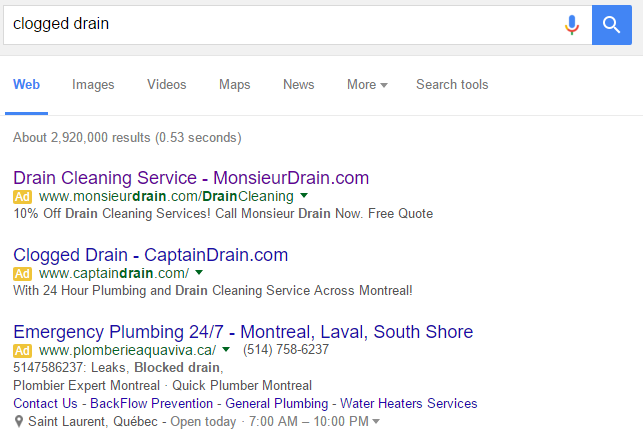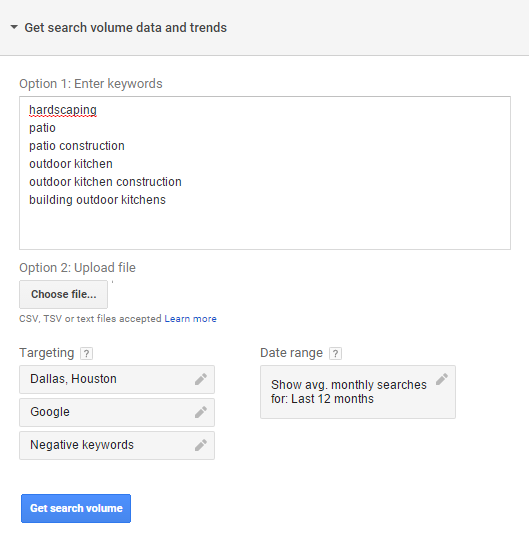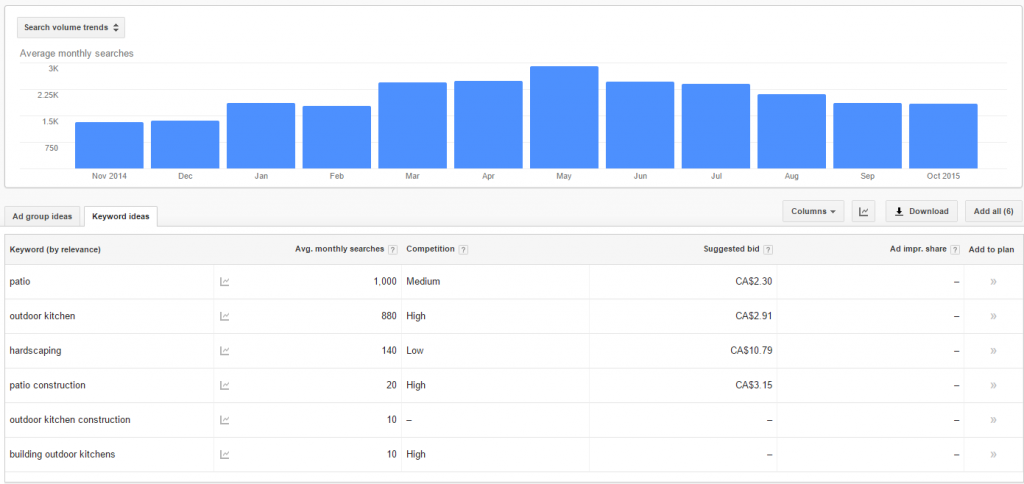
Drive traffic to your site and find new customers
Google’s AdWords is an incredibly powerful tool for driving traffic to your website, but it can be overwhelming for new users – especially small business owners who are new to online marketing in general. It’s also a service that can potentially cause major damage to your bottom line if not used properly.
But don’t let your fear of the unknown stop you from using this potentially very lucrative tool. AdWords is Google's primary source of revenue, so they want it to work for you. We’re here to guide you and make sure that you’re getting started on the right foot. Let’s begin by discussing what exactly AdWords is and how it works.
What is AdWords?
AdWords is Google’s advertising program. You’ve seen examples any time you’ve searched for a product or service. These ads appear exactly like Google’s regular search results except with a small icon that lets observant users know that they’re looking at an advertisement. Appearing, as they do, at the top of the search results means that these are the links that Google’s users are most likely to click on.
Unlike traditional print advertising, where you pay for exposure, Google uses the Pay-Per-Click model for AdWords. PPC means that you only pay when someone actually clicks on your ad. Google could display your ad to thousands of people, and if none of them click on it then you won’t pay a thing. This means that you don’t have to be afraid of running an ad that generates no interest – you experimented with your ad, and it didn’t work, but it didn’t cost you anything but time.
What’s the catch?
There is a downside to using AdWords: if your ads are convincing people to click but your website is failing to convert those users into customers, you could spend a huge amount of money without seeing any results.
The danger of losing your money and having nothing to show for your investment is why it’s so important to be careful about how you use AdWords. Fortunately, Google has given you all kinds of tools to make planning your AdWords campaign as painless as possible.
Using Keyword Planner
You determine who Google is showing your ad to by bidding on specific keywords. When users search for your keywords, your ad has a chance of being displayed at the top of the search results. Therefore, one of the most important things to do is to choose the best possible keywords for your ad.
Google’s Keyword Planner helps you with this by allowing you to see how different keywords perform in your area before you create the ad. For example, let’s imagine we run a hardscaping business in Texas and we want to create a Google ad to promote one of our services. We might check a few keywords like these:
Our imaginary company wants to focus on building outdoor kitchens right now, so they’re checking out a few keywords, ranging from the very general (hardscaping) to the more specific variations on outdoor kitchens. In the targeting section, they have also limited their search areas to Dallas and Houston, because these are the cities where they do the most business – they want to know what people in THESE cities are searching for.
After submitting this search, Google provides a results page that looks like this:
The results feature a bar graph showing when these terms are searched for most frequently (predictably, the spring and summer) and also a list of data about each keyword they were curious about. These results make it look like “outdoor kitchen” might be the best search term to target. It’s specifically what the company wants to sell, it’s searched for 880 times per month, and while the competition is high (meaning there are a lot of other companies making ads targeting this search term), the suggested bid is relatively low, meaning it will be relatively inexpensive to get your ad in front of customers.
On the other hand, the more specific search terms “outdoor kitchen construction” and “building outdoor kitchens” are almost never searched for, while the most general, “hardscaping” is not searched very often and also much more expensive than the other options. You can target the same ad at multiple keywords, and sometimes this is a great idea. If the more specific terms here were searched more often, it would make sense to target our ad at all of them, but for now we’re just going to stick with “outdoor kitchen.”
Building the Ad
Creating the ad itself is actually the easy part. Google gives you a very simple form to fill out and shows you exactly what your ad will look like when it’s done.

"AdWords are delicate but potent. They take us to a place we long to go - a place where we know we are loved. And where we can get 10% off drain cleaning."
Here, you just want to tell potential customers what you’re selling as clearly as possible. If you’re creatively inclined, you can try to do something fun here. However, the thing to keep in mind is that Google has a very restrictive character limit – they want to keep these ads short and sweet. Unless you’re the next Don Draper, it’s probably better to just tell people exactly what you want to do for them. If you’re offering a discount or special package, this is the place to include that info.
Perhaps the most important part of this form, the one that will have the most effect on whether or not your ad campaign is a success, is the Final URL field. This is the URL someone will be sent to when they click on the ad, and you want to make sure that this page gives you the best chance of turning that interested click into a sale, which leads us to our next section.
Why your ad should point towards a landing page
We’ve mentioned before that PPC ads should always point towards landing pages. Many people direct their ads to their home pages or other pages on their website, but this is not the best choice. The ad your potential customer saw in their Google search results was extremely focused, and it got them to click. Why wouldn’t you follow up with a landing page that is just as focused?

A landing page call to action. (A small drawback of PPC ads is that some clicks might be bloggers looking to take a screenshot of your landing page.)
Your landing page should be very simple – it should tell your potential customer exactly what they need to do to get the product or service you were advertising. You can add supporting content if you feel like it’s necessary, but work with your web designer to make sure that you have a call to action prominently featured on the page so that your customer can see it as soon as they arrive.
Keep an eye on things
Once you have everything set up, the most important thing to do is keep an eye on your ads and how they are performing. While Google asks you to set a daily budget that they won’t exceed, you don’t want to just let your ads run for a month without monitoring how effectively they are turning clicks into leads or conversions.
Most marketers like to run tests using different ad copy and different offers to see which ones work the best. If you are a small business owner, you may not have the marketing budget to run a large test, but you should still be fine-tuning your AdWords campaigns as much as possible.
It is not unusual for inexperienced online marketers to lose hundreds or thousands of dollars by using AdWords incorrectly, but this can easily be avoided by simply keeping an eye on your campaign performance. You should decide on a maximum amount you would be willing to pay for every conversion, and if you’ve run the campaign for a few days and you’re paying more than that, shut down the campaign and rethink it.
PPC is one of the most effective forms of advertising in history, with its ability to directly target potential customers who are expressing interest in what you’re selling and connect them with a way to make a purchase within seconds. If you’re new to AdWords, don’t be intimidated. It might very well be the simplest, most effective way to earn new customers and build your business.
Have you had experience working with AdWords to promote your small business? Did you struggle with it at first, or did you find it immediately helpful? Leave a comment, or join the conversation with us on Twitter.






I think Keyword Planner is far overestimated since it’s useful for defining frequency of searches for ANY keyword, however it does not give you all the keywords and it does not provide you with an easy to use structure for given keyword suggestions. So to make a solid list of useful keywords I would use two-step framework: 1st: get the keywords from tools like Serpstat, Ubersuggest and Keywordtool, and 2nd: check the frequencies via keyword planner.
Lynn